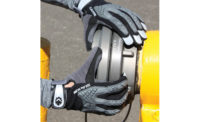The Pacific Earthquake Engineering Research Center is calling on seismic engineers, government agencies and researchers to try out a “live” beta version of a web-based interactive tool that will allow them—free of charge—to search, extract and download recorded ground motions for the analysis and design of earthquake-resistant structures. Seismic engineers familiar with the tool are already lauding it, especially for use in performance-based earthquake engineering.

The 2010 PEER Ground Motion Database allows users to select ground-motion records to match the seismic code’s response spectrum or a customized site-specific spectrum for use when completing linear or non-linear dynamic time-history analysis. “[It] is light years over what we had and is going to give us a better understanding of the performance of buildings,” says Lawrence Burkett, a staff engineer with Rutherford & Chekene, San Francisco.
Formerly, structural engineers had geotechnical engineers select ground motions for a structure’s analysis, without any knowledge of how the “geotechs” made their choices. “With this tool, I can easily make choices myself or better understand the geotech’s choices,” adds Burkett. “The biggest thing this does is add transparency to the design process.”
The tool is based on 10,000 records of shallow-crust quakes culled from 1,000 recording stations for 104 quakes worldwide, from the 1940s to 2003. “We believe this is the largest, uniformly processed database of its type in the world,” says Yousef Bozorgnia, executive director of the Pacific Earthquake Engineering Center (PEER) at the University of California, Berkeley. “We go to the raw data and process it ourselves,” he adds. The project is sponsored by the California Dept. of Transportation and Pacific Gas & Electric Co.
By the end of the year, PEER expects to have added 8,000 more quake records through 2010. In 2012, PEER hopes to release a similar tool for subduction-zone ground motions, which shake areas such as the Pacific Northwest and Chile.
Bozorgnia calls the database, which contains a graphical interface, “user friendly.” Engineers can search, select, download and scale records to match a target response spectrum simply by plugging in certain parameters online at http://peer.berkeley.edu/peer_ground_moton_database. The magnitude of the quake and the distance it is from a structure, whether a building or a bridge, are among the parameters.
The tool is “very useful” because it lets engineers look at different scenarios, says Ronald O. Hamburger, a senior principal in the San Francisco office of Simpson Gumpertz & Heger. “I use this tool to explore such questions as what will the ground motion for a repeat of the 1906 San Francisco earthquake look like at a building in San Francisco, and how big an earthquake can this building survive?”
Some places allow PEER to download raw ground-motion data from their websites. Other locations, including China, give data but do not allow PEER to make it available. Bozorgnia says this data, which is not in the database tool, is still useful to researchers. “We have learned a lot by comparing the recorded motion to our existing models,” he says. “It validates the models for most cases.”



Post a comment to this article
Report Abusive Comment